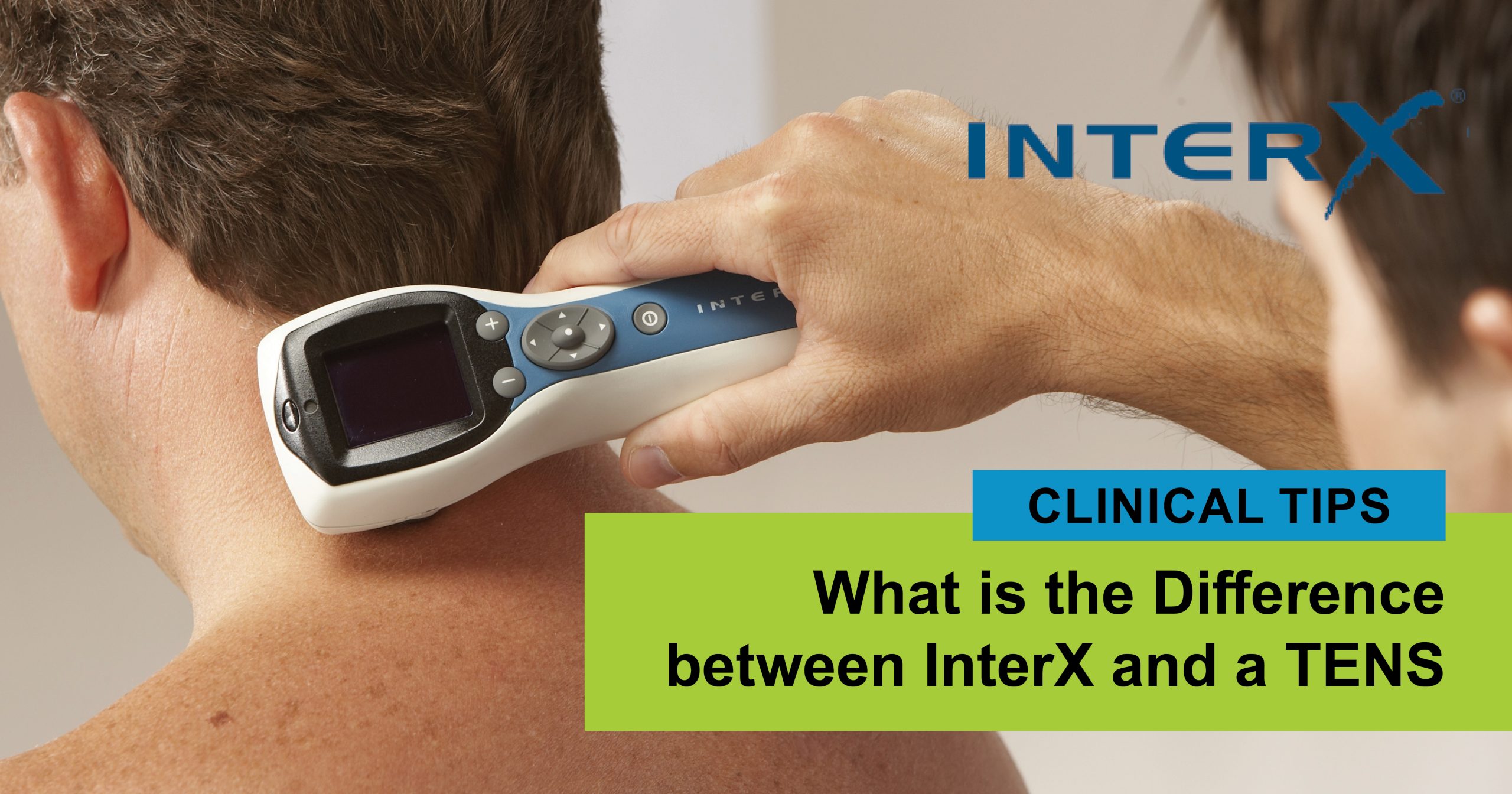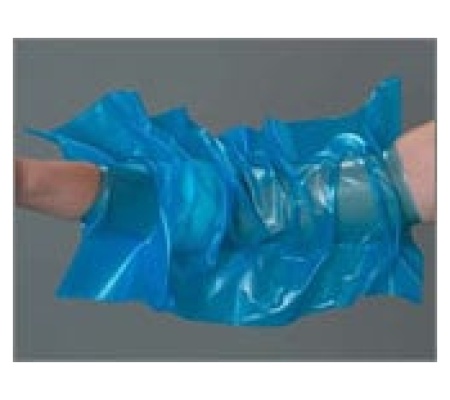You may find yourself wondering what is the difference between InterX® vs TENS? This blog will break down the differences between the two.
[ux_image_box style=”vertical” img=”38364″ image_width=”50″ image_size=”original” text_align=”left” text_size=”small”]
[/ux_image_box]
InterX®
InterX® therapy is noninvasive interactive neurostimulation that works over the skin. It is only “skin” deep, so unlike a TENS, the depth of penetration is more superficial, therefore, not causing muscle contraction but affecting the blood, bone, nerve, and tissue. The InterX® works on the Central Nervous System, brain, and spine via the skin. The InterX® is able to stimulate at a higher intensity of stimulation but does not hurt.
[ux_image_box style=”vertical” img=”38365″ image_width=”50″ image_size=”original” text_align=”left” text_size=”small”]
[/ux_image_box]
TENS
TENS works by high-frequency, low amplitude stimulation of larger peripheral fibers, which inhibits transmission of pain through various centers of the brain. A standard TENS also causes muscle contraction which prevents turning the device intensity up. The higher intensity affects the nerve fibers that carry information related to pain, touch, and temperature through the Central Nervous System.
[ux_image_box style=”vertical” img=”38391″ image_width=”50″ image_size=”original” text_align=”left” text_size=”small”]
[/ux_image_box]
Electrodes
The interactive nature of the InterX® allows one to turn the device up and this also prevents overstimulation of the nerve endings. The closely positioned electrodes allow concentration of the stimulation to one point and the high-density electrical current enables sufficient intensity to stimulate those specific nerve fibers where the stimulation goes in best (low impedance).
A standard TENS does not allow one to treat over metal implants or over areas of the face as this could cause burning over the implant and over the face can cause spasms or pressure to the head and eyes. The InterX® however, can be placed over metal implants and will not cause burns. It can be used over the face safely with the concentrated stimulation over the area treated; InterX® automatically adjusts according to the resistance in the tissue preventing burns or overstimulation of the nerve endings.
The InterX® allows you to find the right place to treat as it sticks to the skin, feels stronger and the device gets very quiet when it locates the right place for the energy to penetrate into the body.
The ability to change the therapeutic settings is important as you do not want the body to accommodate. This often happens with standard-type TENS. Additionally, with standard type TENS, the area that is treated only feels better while the device is turned on. With the InterX®, the treatment is cumulative and the endogenous opioids and endorphins build up in the body until they begin to release on their own. The body responds to the various settings available with the InterX® allowing the body to release various endorphins with the change of frequency or settings. These endorphins are called dynorphins, endorphins, and beta enkephalins just to name a few.
The stimulation improves microcirculation as evidenced by improved warmth of the tissue and improved color in the skin, improved oxygenation, and energy to the cells which causes more natural healing in the body.
Summary
To summarize, the design and interactive waveform of the InterX® allows the therapist to deliver patient-specific treatments and enables an entirely different treatment approach. Treatment can be applied locally to the point of pain, to the dermatomes, over orthopedic metal implants and directly over the spine, the face, and scalp using InterX® protocols:
- SCAN (without gel) to identify the right place to treat anywhere on the body including the spine and face. InterX® identifies points of low impedance;
- TARGET Stimulation is delivered using high amplitude, high-density current
- Amplitude = 35-60mA on the skin (compared to 15-40mA with TENS)
- Current Density = 170-220mA per square inch, (compared to 5-12mA with TENS)
with a wide range of low and high frequencies – 15 – 480 pulses per second;
Most TENS frequencies go to 220hz as the highest frequency
- DYNAMIC – Perform therapeutic exercise while treating the area. Interactive, variable waveform and short treatment protocols avoid nerve and physiological tolerance or accommodation. Movement with stimulation to the pain site alters the signal to the brain (not just blocking it). This can eliminate the memory of pain in the brain.
We like to recommend using lower settings to calm the body down (1, 2) and higher settings for increased activity (4, 5), the mid-level frequency that can be used on either end DEMONSTRATE
Observations
We observe and document clinical changes from The InterX®:
Sleep: The body will shift out of the “fight and flight” state or UP AND GO state into a healing state of REST, DIGEST & HEALING. Improvements can be seen as the quality of sleep becomes deeper, more restful, and more consistent.
Gut Function: Improved digestion, less bloating and gas, improved absorption, less nausea.
Mood: Improvements in mood and energy occur over time. The desire to want to get out of bed and complete tasks, etc. begins to return.
Recovery: Improvements in tasks and activities that used to wipe one out will be easier to recover from and the result is improved function BEFORE longer-term pain relief.
Less Pain: Eventually. Dispersed pains become more localized and localized intense pain will disperse and be lessened in intensity. Pt reports new norms of pain that eventually are less.
Thinking: Improved ability to think, less brain fog.
The therapeutic results are cumulative. The treatment builds on itself with the goal for the body to naturally take over and cause more natural healing from the inside out.
Conclusion
Lastly, tolerance to stimulation has to be overcome. Studies have shown that ordinary TENS devices can be ineffective by the fourth day. The InterX® utilizes interactive neurostimulation, where the feedback system modulates the electrical stimulus in response to the impedance change of the patient’s skin and underlying tissues, the latter controls output from the device by varying the voltage in order to maintain a constant peak current. Constantly changing signals prevents accommodation to therapy.
For more information about the Interx® product range please contact RehaCare Customer Service on 1300 653 522 or at info@rehacare.com.au.



